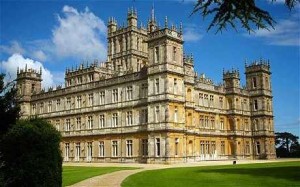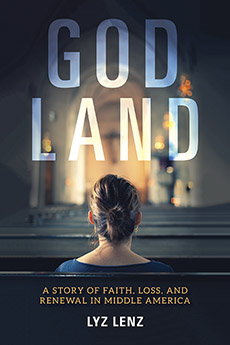
In the 1980s, when feminism trickled into higher education in the U.S., literary critics, historians, and others turned to excavating the untold stories of women as a way of challenging a gender-biased “master” narrative of history, an andro-centric literary canon, and the general assumption that, since women had been prohibited for so long from public office or real careers, they had never really done anything interesting, aside from the few rare cases in which they had become queens or high-profile eccentrics who otherwise made their mark on the world.
Skip forward 30 years, and feminist scholars have made a great deal of progress filling in the “gaps” of history, recovering the works of female writers, artists, scientists and entrepreneurs, and furnishing interested readers with vivid details about how ordinary women lived, worked, and generally thrived even in legal circumstances and social mores not crafted to afford them any real independence or freedom. But we still, as readers, can’t resist stories of queens, high-profile eccentrics, and other women whose wealth and status gave them extraordinary opportunities. Combine this ceaseless literary interest with a pop-culture phenomenon like the obsession with Downton Abbey sweeping over all sorts of continents, and you have a book that screams “best-seller” from its very conception.
Lady Almina and the Real Downton Abbey: The Lost Legacy of Highclere Castle offers something new, genre-wise. It is not precisely a history, since that would presumably involve more exhaustive research than poking about in the very interesting archives of Highclere Castle (ordinary homes have scrapbooks, photo albums, miscellaneous household accounts; stately homes have archives, and an archivist to manage them). Nor is it a full biography of Almina Wombwell, who marries the 5th Earl of Carnarvon, since the narrative more or less abandons Almina once she leaves Highclere for a new husband and a new home. The book is a puff piece of some length and depth, supported throughout by charming pictures of Almina taken to best advantage: the portrait of her in her countess coronet, preparing for the coronation of George V, or doting, swamped in ruffles, over the equally beruffled bassinet of her heir and firstborn, Porchy, future Earl the 6th. (The current Earl is the 8th of the line.)

In whole, the book reads like an in-depth society profile of the rich and powerful. (If Carnarvon rings a dim bell in the halls of memory, it’s because he is the one responsible, with Howard Carter, of finding and opening the tomb of Tutankhamen – quick recap of that astonishing find here.) It’s a society profile with heft and heart, though. While the first hundred pages or so provide, in proper Edwardian fashion, accounts of the glitteringly beautiful, staggeringly expensive world of aristocratic England (lovingly described with stock phrases lifted from society columns past), a solid third of the book is devoted to Almina’s work as hospital administrator during the Great War, first at Highclere Castle (much like her fictional counterpart, Cora Crawley, at Downton Abbey in Season 2) and then at the ’48,’ in London.
It is here that the book shows itself to be sui generis. While the earlier chapters play on the Downton appeal by making occasional references to what the ‘downstairs’ staff were doing–who was driving the Highclere motorcars, how much the butler was paid–our authoress the Countess doesn’t shirk a full account of the impact, the suffering, the devastation, and the inconceivable loss of life that the Great War inflicted on English society. History demands it, in one respect; to be anything remotely resembling an in-depth profile of Almina’s life at Highclere, the book has to address her work at opening and running the hospital, which apparently meant a great deal to her (and which was paid for, as were all the other expensive undertakings at Highclere, such as redecorating, 3-day house parties for the then-Prince of Wales, or funding her husband’s excavations in Egypt, by Alfred de Rothschild). But the details make for tough reading, even for those who know something about the war. (For further reading, Max Egremont’s book Some Desperate Glory tells the story of the Great War through the eyes of the British poets who served in it.) The puff piece has an element of drama, too.

The last third of the book gets even further away from the Downton Abbey tie-in and whatever the “lost” legacy of Highclere Castle will prove to be by focusing on Carnarvon’s work in Egypt, which is a fascinating fable all on its own: the only such tomb ever found intact, the whole enterprise of incalculable archaeological, historical, and financial value, capped by the suddenness of Carnarvon’s own unforeseen death shortly thereafter, spawning rumors of “The Pharaoh’s Curse.” (In the tie-in film Secrets of Highclere Castle, which highlights and excerpts the book, the main secret seems to be the Egyptian loot that the 5th Earl squirrels away in hidden cabinets within the house, not to be discovered until well after his death – shocking, indeed!) Once the Earl dies, the book wraps up quickly by trundling Almina off to a rather fast second marriage, and installing a new countess (sequel to follow). The profile is complete.
Salacious it is not. (That dubious claim to fame is reserved for William Cross’s tell-all, which he describes as considerably less “sanitized.) But consider the source. Fiona, the 8th Countess of Carnarvon, is neither a gossip-monger nor a hack. She quite clearly sees herself as the steward of an ongoing legacy, one that has an important historical role but also a more domestic dimension, that of being her residence. She is also an excellent businesswoman. Along with the other ventures that keep Highclere Castle solvent, including a catering business and rental fees, it must be expected that she, of all people, would want to get a much mileage as she can out of her family home’s alter ego as “The Real Downton Abbey.” But for all that–its generic status as not-quite-history, not-quite-biography, not-entirely-a-portrait-of-the-rich-and-famous–the book is an absorbing read. Almina was an intriguing woman, and her life reflects the struggles of the time in which she lived. If not strictly a work of feminist scholarship per se, such a book has something new to offer in terms of teaching the history of women to a broader readership. And that, I think, is all good.
